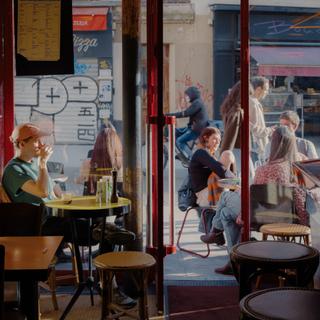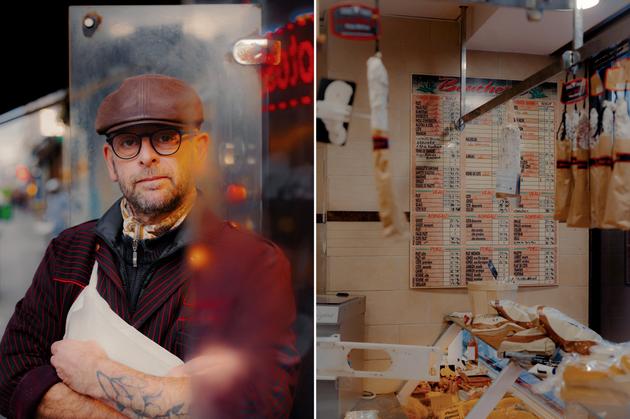


The story of a street: Oberkampf, from working-class area to lively bric-a-brac
FeatureIt was home to metalworkers in the 19th century, to the wild nights of the 1990s and to the new millennium's gentrification. Step into the 11th arrondissement and wander along the local shops and trendy cafés of a Parisian street that has changed greatly, but never lost its soul.
Oberkampf – here is a word that immediately sounds like an enigma. Could it be a forgotten battle? A little-known composer? Christophe-Philippe Oberkampf (1738-1815), a Frenchman of German origin, was the founder of the factory making the famed toile de Jouy fabric. Christened in 1864, the long Parisian thoroughfare – formerly Rue de Ménilmontant – still bears traces of its industrial background. This was where, in the workshops, hides and skins were tanned, wood was worked and, most importantly, metal was melted.
Nowadays, if you go into the narrow Cité Griset at No. 125, you'll come across an imposing factory in bright red brick, which makes the surrounding winter gray seem practically cheerful. This working-class cul-de-sac has an almost Brooklyn feel to it. A metallurgy company specialized in aluminum rolling, owned by the Griset family, was based here in the 19th century. Take a peek at the first floor, and you'll see that the steam engines have since been replaced with printing presses. The Imprimerie du Marais, a print shop, took up residence here in 2021. "There's still an artisanal memory here that inspires us, a sort of heritage we feel we must honor," said Mélody Maby-Przedborski, head of communication inside this gleaming wood-and-glass structure.
Further down the road, at Fondeur, No. 67, some of the original Oberkampf spirit also remains. Françoise Renner, former owner of this industrial hardware store that still occupies the same space, recounted with some emotion how "since the end of the 19th century, [her] family has preserved a savoir-faire, by inventing for instance the zinc folding machine that was used to shape Haussmann buildings' roofs."

Rue Oberkampf has been kept out of the main tourist routes in Paris and therefore has not been studied much. Too working-class, too common perhaps, it has slipped under the radar of urban X-rays. "Oberkampf is more than just a thoroughfare. It's not just a street, it's a whole neighborhood. Here we've always talked about Oberkampf in the broadest sense, meaning as a community," recalled Léa Panigel, a sociologist who lived in the small neighboring cul-de-sac Villa Gaudelet for a long time, and made the area the subject of her master's thesis.
Yet Oberkampf really is just a street. The proof is in its narrow sidewalks, which are nowhere near as wide as those of a boulevard. If you look up – at your own risk, given how busy the place is – you won't help but notice the motley mix of buildings surrounding you. No harmony to be found here: Eclectic structures line up without the slightest regard for the eye of the beholder. Renowned sociologists Michel Pinçon and Monique Pinçon-Charlot aptly described it as an "architectural bric-a-brac," a "chaotic urbanization" (Paris, quinze promenades sociologiques, "Paris, 15 sociological walks"). While Haussmann's Paris is but a few feet away, on Avenue de la République and Avenue Parmentier, on Boulevard Richard-Lenoir and Boulevard Voltaire, Oberkampf has managed to retain its singularity.
You have 62.84% of this article left to read. The rest is for subscribers only.
